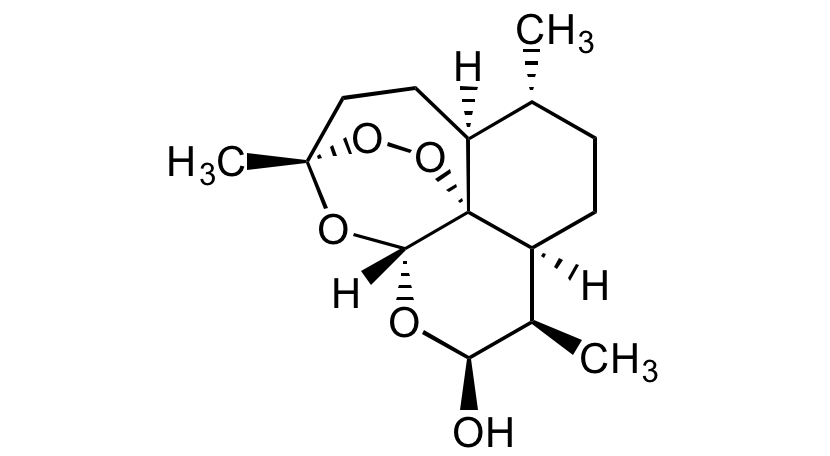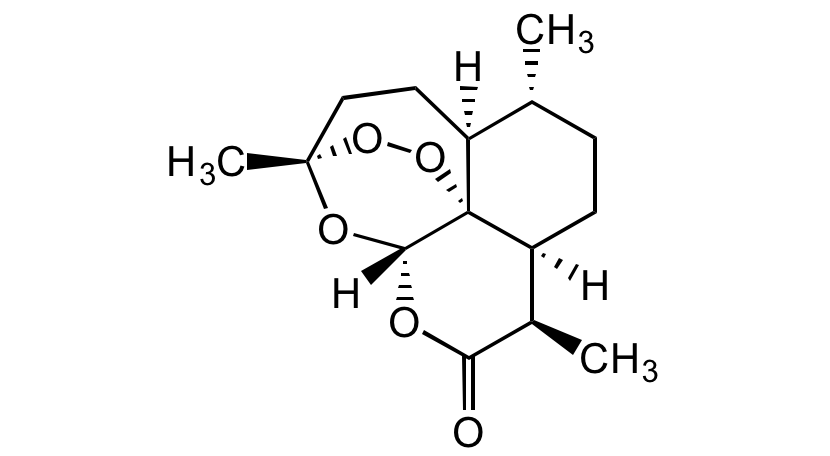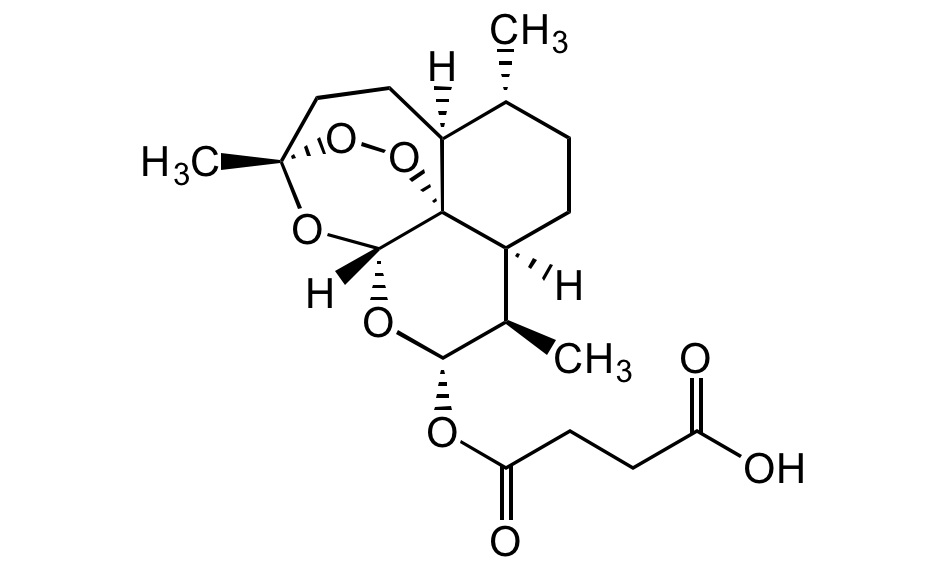
Chemical Structure
Dihydroartemisinin
AG-CN2-0468
CAS Number71939-50-9
Product group Chemicals
Estimated Purity>98%
Molecular Weight284.3
Overview
- SupplierAdipoGen Life Sciences
- Product NameDihydroartemisinin
- Delivery Days Customer10
- CAS Number71939-50-9
- CertificationResearch Use Only
- Estimated Purity>98%
- Molecular FormulaC15H24O5
- Molecular Weight284.3
- Scientific DescriptionActive metabolite of artemisinin. Anti-malaria (Plasmodium). Anti-schistosoma. Apoptosis inducer. Anti-cancer. Anti-inflammatory Inhibits production of tumor necrosis factor-alpha (TNF-alpha), interleukin-6 (IL-6), monocyte chemotactic protein-1 (MCP-1) and nitric oxide (NO). Autophagy inducer. Functional ARX inhibitor. Enhancer of GABAA signalling. Targets Gephyrin. Sown to have anti-SARS-CoV-2 activity with an EC50 of 13.31 +/- 1.24microM, and beeing potentially useful in the treatment of COVID-19. - Chemical. CAS: 71939-50-9. Formula: C15H24O5. MW: 284.3. Isolated from Artemisia annua. Active metabolite of artemisinin. Anti-malaria (Plasmodium). Anti-schistosoma. Apoptosis inducer. Anti-cancer. Anti-inflammatory Inhibits production of tumor necrosis factor-alpha (TNF-alpha), interleukin-6 (IL-6), monocyte chemotactic protein-1 (MCP-1) and nitric oxide (NO). Autophagy inducer.
- SMILES[H][C@@]12CC[C@@H](C)[C@]3([H])CC[C@]4(C)OO[C@@]13[C@]([H])(O[C@H](O)[C@@H]2C)O4
- Storage Instruction-20°C,2°C to 8°C
- UNSPSC12352200



![Dihydroartemisinin [71939-50-9]](https://www.targetmol.com/group3/M00/02/AF/CgoaEWY7NU-EcWdUAAAAAOgIEWc570.png)
